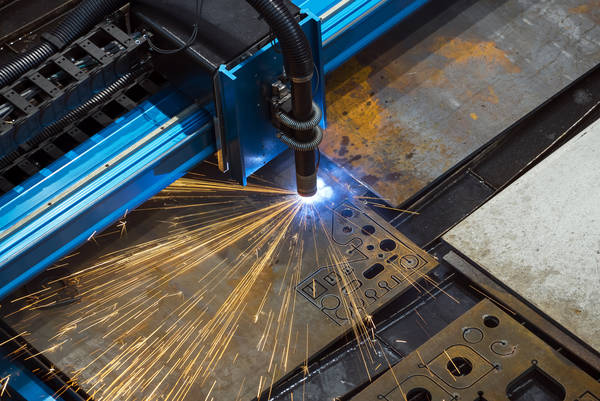Anti-Corrosion Coatings for Equipment Parts
In industrial applications, and specifically in semiconductor processing equipment applications, damage and failure of metal components results from exposure to reactive chemicals. Protecting metals from corrosion is of great technical importance and significance, especially in aggressive environments. A common method of protection is to deposit protective films or coatings onto metal surfaces. A variety of protective coatings, such as nitrides or metal oxides, with high corrosion resistance, wear resistance, and good mechanical strength, have been widely studied and tested.
Challenges with anti-corrosion film deposition technologies
Until now, physical vapor deposition (PVD) techniques have been extensively used for synthesizing such coatings because no toxic chemical precursors are used and no toxic reaction gas or liquid bi-products are produced during the deposition process. This makes PVD a somewhat environmentally friendly deposition process compared with the thermal chemical vapor deposition (CVD) or even plasma enhanced chemical vapor deposition (PECVD). However, due to the line-of-sight transfer of vapor flux during the PVD process, the PVD coatings usually suffer from many intrinsic defects, including columnar structures, pinholes, pores, cracks, and discontinuities, which can significantly affect their corrosion resistance, especially when the substrates are active alloys, such as steel, or exposed to a chloride ion environment.
To obtain a dense microstructure of the coatings and to improve the corrosion resistance, thicker coating is preferred. For a suitable substrate material such as those that can withstand blasting procedures, Thermal Spraying is an option. The coating is applied by a spray of molten material propelled at high speed onto a cleaned and prepared surface. Because the adhesion of the coating to the substrate predominantly consists of mechanical bonding, careful cleaning and pretreatment of the surface to be coated is necessary. Since film formation via thermal spray coating is a chaotic process, molten particles spread out and deform as they strike the substrate. Voids can occur if the growing deposit traps air. Particles overheated in the spray jet can become oxidized. Finally, non-molten particles may simply be embedded in the accumulating deposit creating zones of potential film failure.
Conformal high-quality anti-corrosion films with ALD
More recently, atomic layer deposition (ALD) has gained attention as it does not suffer from the above-mentioned drawbacks. ALD is ideally suited for applications requiring thin film growth in high aspect ratio structures with little or no line of sight. Film qualities such as uniformity, conformality, low-temperature processing, and exquisite thickness control, enable the deposition of high-quality barrier layers. At the home of ALD, Beneq has developed corrosion resistant thin films epitaxially grown on various substrates and geometries to protect the surface or block pinholes and other defects. For example, Beneq has shown that the ALD-Al2O3 acts as a good insulating barrier with a low defect density and excellent passivation properties irrespective of geometry.
Aside from Al2O3, TiO2 is one of the most important reinforcement materials used as a protective layer and offers high strength, good oxidation, and corrosion resistance. Particularly, TiO2 is known to display excellent corrosion resistance against aqueous solutions, which makes it a promising candidate to remedy the drawbacks of Al2O3 as a sealing layer against humidity in multilayer coatings we call Aluminum/Titanium Oxide (ATO). Other ALD oxides developed for corrosion protection include Ta2O5, SiO2, ZrO2, and HfO2, either as a single layer or interleaved as a stack much in the same way as TiO2 mentioned above.
Interesting new oxide ALD coatings from Beneq
Beneq’s latest ALD offering for anti-corrosion application revolves around methods for plasma-etch resistant films where the conventional metal oxides may not be robust or thin enough to protect against fluorine, chlorine or bromine plasmas. For this application, Beneq now offers Y2O3 and other rare-earth metal oxide coatings either as a single layer or a multilayer or mixed material to further improve its anti-corrosive properties.
For more details on this new and exciting application of ALD technology or any of the above-mentioned processes, please do not hesitate to contact our experts, or send us a message about how to evaluate and implement any of these Beneq ALD solutions.

